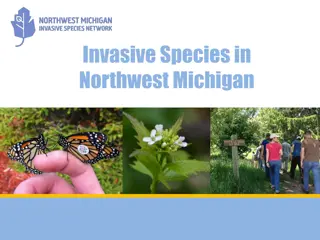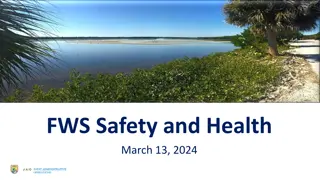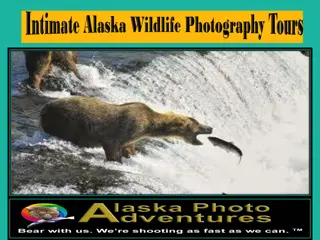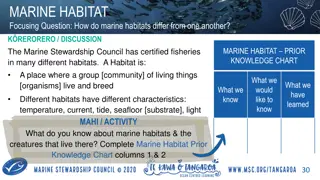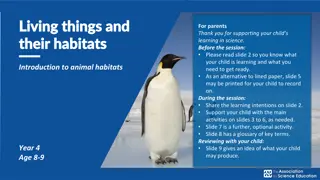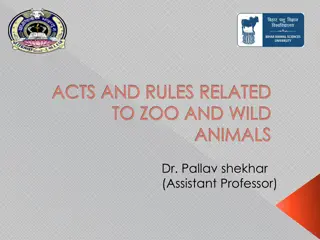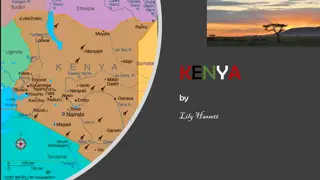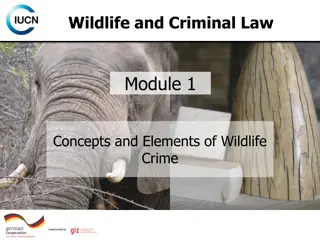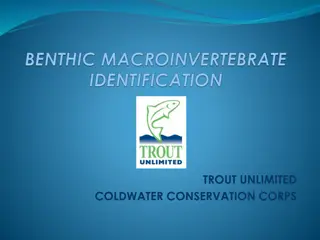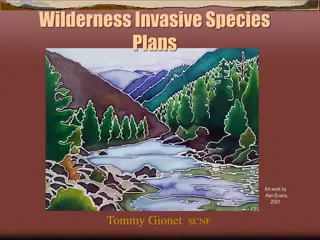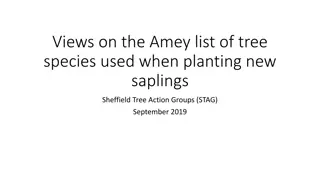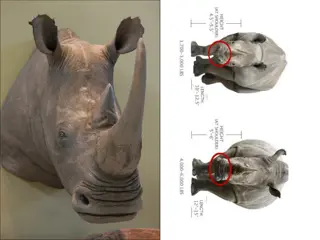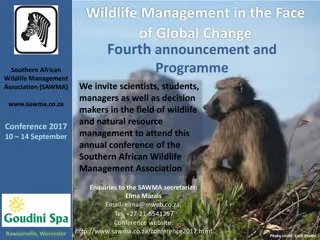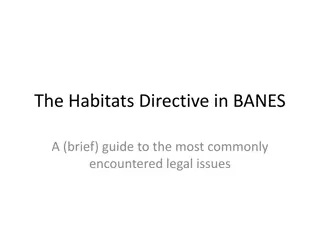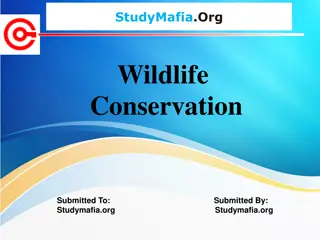Wildlife Workshop: Assessing Potential Species in Habitats
Explore the techniques used in wildlife workshops to assess potential species within different habitats. Learn about using questions and clues, observing plant life, identifying food and nesting sources, and understanding species signs. Consider factors like resource abundance, competition, abilities needed for access, and climate impact on wildlife populations.
Download Presentation

Please find below an Image/Link to download the presentation.
The content on the website is provided AS IS for your information and personal use only. It may not be sold, licensed, or shared on other websites without obtaining consent from the author.If you encounter any issues during the download, it is possible that the publisher has removed the file from their server.
You are allowed to download the files provided on this website for personal or commercial use, subject to the condition that they are used lawfully. All files are the property of their respective owners.
The content on the website is provided AS IS for your information and personal use only. It may not be sold, licensed, or shared on other websites without obtaining consent from the author.
E N D
Presentation Transcript
Wildlife Workshop RIDEM Division of Fish & Wildlife Mary Talbot, Senior Wildlife Biologist Jennifer Brooks, Volunteer Coordinator
Using Ques and Clues to Assess Potential Species Within an Area
Try Breaking it Down.... Plant life is an easy starting point! This helps you to figure out your habitat type, and make an educated guess as to which animals live there. Are there trees, fields, or desert? Ex. Trees? Shrubs? What kind? Do any of these trees/plants produce flowers, fruits, seeds? Which type of animals can access/extract these food sources? Are there sources of water? Not only for animals to drink, but what types of animals may live/breed there? Do these water sources produce food sources as well? Larvae, eggs, fish, aquatic insects, plants, algae, etc.? What kind of cover is available? Thick shrubs, grasses, Logs, snags, water, trees, caves, brush piles, rock walls, buildings? If in a forest, is there an understory? Is there an edge?
Is There Gradual Edge? Or Does the Forest End Abruptly?
Cover: Snags and Tree Cavities NESTING Habitat for many species! ROOSTING Areas! Sources! FOOD
Food Sources (Examples from Plants/Trees): Seeds: Acorns, Beech nuts, Hickory nuts, Pinecones, Grass Seeds, Catkins Fruit: Berries, Crab Apples, Grapes Bark/twigs Shoots, Leaves, Buds Fungi
Other Food Sources: INSECTS Flying: Mosquitoes, Flies, Moths Crawling: Termites, Ants Larva (in bark, in soil, water) Eggs Other Mammals, Birds, Reptiles, Amphibians Including their eggs and/or young
Other Things to Consider: Abundance of Resource Food Source, Cover Type Are species competing for these resources? Are special abilities necessary to reach/access these resources (Flight? A nut-cracking bill or incisors? Ability to swim? Ability to climb?) What is the Climate of the Area? What animals could stay here year-round? What might winter here? What might migrate through?
Outside Activity: Putting our observations and knowledge to the test!


